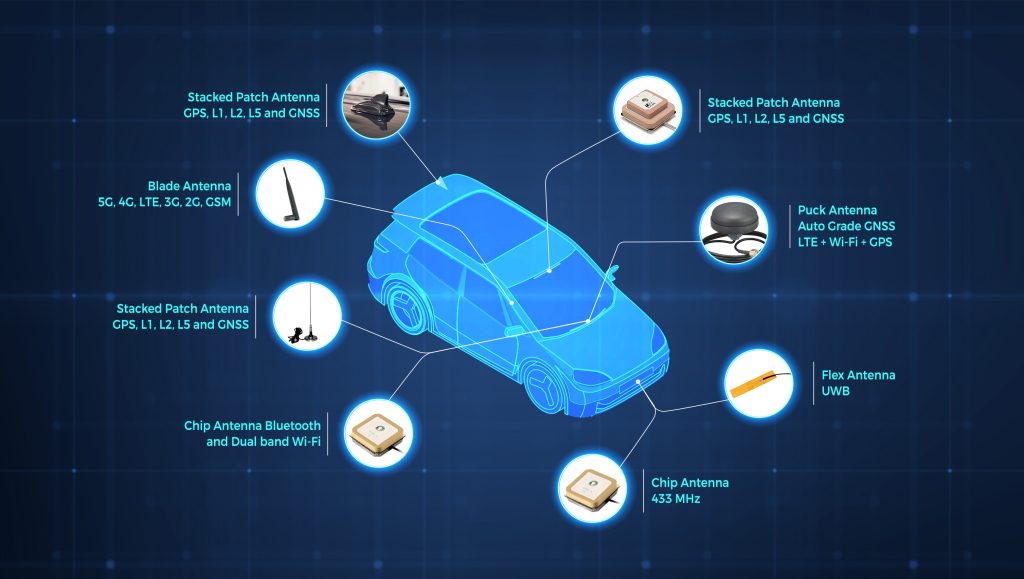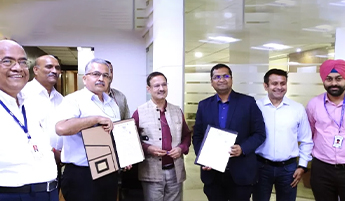Introduction:
Automotive technology continues to change at an exponential rate, with antennas now playing a central role in providing efficient connectivity, communication, and entertainment. The vehicle is turning into a complex system with ever more advanced electronics, and automotive antennas have changed accordingly.
Overview of Automotive Antennas:
Modern-day automotive antennas have undergone significant advancements beyond traditional radio antennas. In the present day, they have come a long way to serve functions other than the common AM/FM radio reception. Some of these features include GPS navigation, satellite radio, Bluetooth, Wi-Fi, cellular connectivity, among others, and even advanced driver-assistance systems (ADAS).
Types of Automotive Antennas:
Diversity Antennas:
- Overview: Diversity antennas are known to utilize numerous antennas that can help solve the problem of signal interferences by enabling proper signal reception and connectivity, thus ensuring a reliable link between the transmitter and receiver.
- Usage: This system is often found in environments where there is a lot of signal traffic, such as large cities, where diversity antennas are installed on vehicles to provide a better connection for navigation systems, infotainment, and communication systems.
Shark Fin Antennas:
- Overview: These shark fin-style antennas offer an innovative solution to replace the older and less attractive whip antennas.
- Usage: In addition to their visual attractiveness, shark fin antennas often integrate multiple antennas inside them, serving various purposes such as improving the signal quality.
GPS Antennas:
- Overview: GPS antennas are crucial for tracking precise locations and contributing to navigation, as well as location-based services.
- Usage: These antennas evolved into an essential component of current-day vehicles, enabling accurate mapping details along with real-time traffic data.
Telematics Antennas:
- Overview: Telematics antennas are the means of communication between vehicles and networks external to the vehicle that make possible the functionality of options such as remote diagnostics and over-the-air updates.
- Usage: As the use of connected cars increases, the use of telematics antennas is vital for ensuring vehicle performance as well as enabling advanced capabilities.
5G Antennas:
- Overview: With the increasing prevalence of 5G connectivity in automotive applications, antennas designed for high-speed, low-latency communication are becoming more common.
- Usage: In the case of V2X (vehicle-to-everything) communication, 5G antennas offer faster data transfer that supports autonomous driving and advanced safety features.

Technical Specifications:
1. Frequency Range: Modern automotive antennas are required to support a wide frequency range to enable seamless communication across various technologies. This includes:
- Traditional AM/FM radio signals.
- Satellite radio frequencies.
- Bluetooth communication bands.
- Wi-Fi connectivity bands.
- Cellular network frequencies.
- Advanced 5G networks for high-speed data transfer.
2. Gain: Gain is a crucial parameter that signifies the ability of an antenna to concentrate its radiated power in a specific direction. Higher gain antennas offer the following advantages:
- Improved signal reception in challenging environments.
- Enhanced transmission capabilities for reliable communication.
- Increased coverage range for a more robust connection.
3. Polarization: Automotive antennas can adopt various polarization types based on the specific requirements of the communication system. These include:
- Linear polarization for straightforward signal transmission in a particular direction.
- Circular polarization for enhanced signal robustness in dynamic or multi-path environments.
- Dual-polarization setups for increased flexibility and adaptability to diverse communication scenarios.
4. Impedance Matching: Effective impedance matching is critical for optimizing the overall performance of automotive antennas. Specific aspects of impedance matching include:
- Ensuring maximum power transfer between the antenna and the connected system.
- Minimizing signal reflections and losses to enhance signal integrity.
- Supporting a range of impedance values to accommodate various communication devices and systems within the vehicle.
- Utilizing advanced matching networks to adapt to impedance variations and environmental conditions, ensuring consistent and reliable performance.
5. Bandwidth: Automotive antennas need to provide sufficient bandwidth to support the diverse range of communication protocols and frequencies. This involves:
- Accommodating the wide frequency spectrum required for different communication technologies.
- Supporting high data rates for applications such as streaming, navigation, and real-time communication.
- Ensuring flexibility to adapt to evolving communication standards and emerging technologies.
6. VSWR (Voltage Standing Wave Ratio): VSWR is a key metric that assesses how efficiently an antenna transfers power between the transmitter and receiver. Low VSWR values indicate better efficiency and signal integrity, while high values suggest potential signal reflection and degradation.
7. Radiation Pattern: The radiation pattern of an antenna describes how it distributes its radiated power in space. Key considerations include:
- Directivity and shape of the radiation pattern.
- Consistency and stability of the pattern across different frequencies.
- Adaptability to the vehicle’s physical design and placement constraints.
8. Environmental Resilience: Automotive antennas must exhibit robustness against environmental factors such as extreme temperatures, moisture, and vibrations. Specifications may include:
- Temperature tolerance and operational range.
- Ingress protection (IP) ratings for resistance to dust and water.
- Mechanical durability to withstand vibrations and shocks associated with vehicle movement.
VVDN’s Expertise in Complex Automotive Antennas
VVDN specializes in the designing and optimizing of automotive antenna systems, catering to the dynamic needs of the automotive industry. Our unparalleled proficiency is rooted in advanced RF engineering capabilities and a cutting-edge RF lab infrastructure. Utilizing state-of-the-art technologies, we address challenges related to signal propagation, interference, and seamless integration within the automotive environment. The RF lab serves as a pivotal testing ground, facilitating rigorous validation of antenna performance under diverse conditions. Our comprehensive approach spans antenna design, simulation, prototyping, testing, and mass manufacturing, ensuring the delivery of robust and high-performance automotive antenna solutions.
For further information on our offerings and collaborative possibilities to meet your antenna requirements, please contact us at info@vvdntech.com.





















